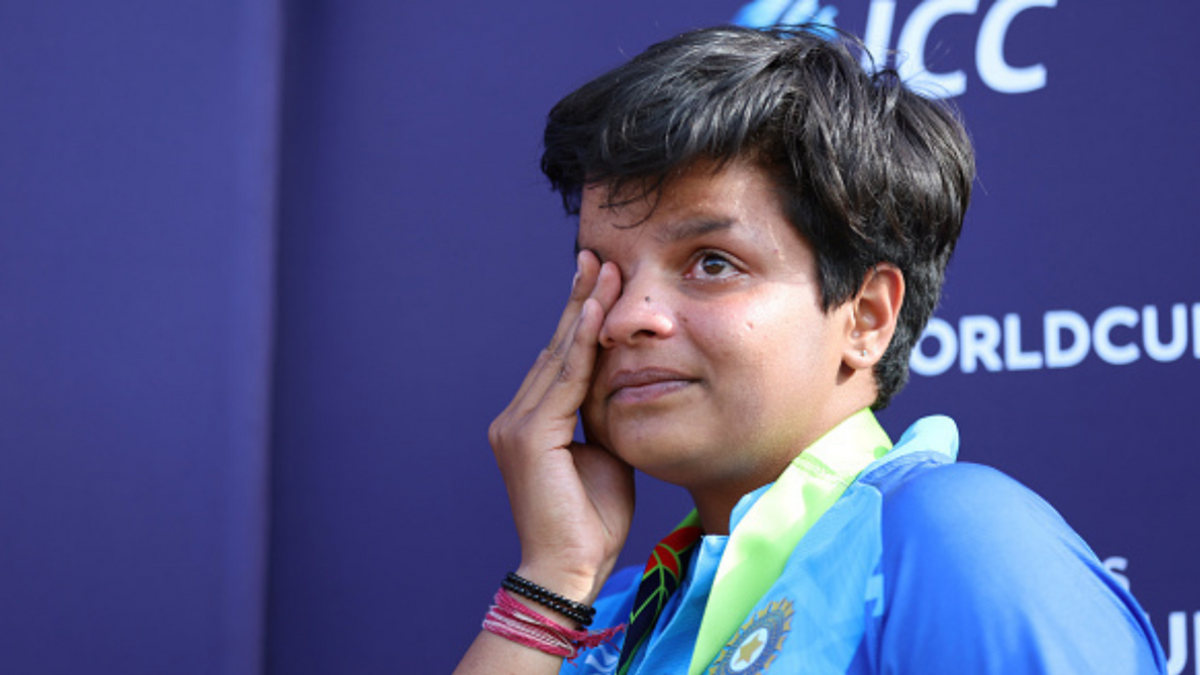
The Women’s Under-19 T20 World Cup triumph rounds off a memorable month for India but it is actually the start of a whole new revolution, writes Sarah Waris.
Soumya Tiwary’s punch off Hannah Baker delivery past cover might have brought the winning runs, but it was not greeted by the usual shrieks and exclamations that follow a World Cup win. If you listened closely, you could faintly hear the hurried, unsynchronised taps of the shoes as the team ran towards the middle and embraced each other in a never-ending huddle.
Some of the world champions – you cannot use that phrase often enough – were barely being able to afford the bare necessities of life at some point in their lives. To them, this achievement was beyond sporting glory.
Thousands of miles away, you just smiled, without vocal proclamations or screams. A blooming smile, a glint in the eyes, and anticipation of greater things to come. You had witnessed numerous heartbreaks as the women’s team had fallen short again and again in global events across the last five years. All you could perhaps muster was a sigh of relief at the jinx being broken before tearing up when captain Shafali Verma, between sobs, muttered the importance of the win.
You remember her being unable to control her emotions after the senior team had lost in the Women’s T20 World Cup final to Australia in 2020. Guide your mind back to a crestfallen Jhulan Goswami after India went down by nine runs in the 2017 World Cup at Lord’s, and more recently think of the dejected Harmanpreet Kaur despite winning a silver medal at the Commonwealth Games. All three defeats could have had different stories, but the sadness on the players’ faces did not entirely stem from the losses alone.
Winning matters, especially in a country where a sizeable chunk is ready to pounce upon any step taken to promote this gender. Winning mattered if they wanted to prove to the BCCI that their efforts towards them were worth it. Being deemed a failure even when you come second is ingrained right from our school days, and it was exactly what the board seemed to have preached over the years. Winning was all that really mattered here.
Verma’s tears on Sunday after the win, then, signified so much more because it was for the first time she would have felt like she belonged.
You need not go further than six weeks ago. Possibly the greatest cricketing team in history, the Australians, came calling for five T20Is. The marketing was next to nil; free tickets were up for sale; and between the innings, the broadcasters switched to highlights of old matches, for there was no show planned.
Compare that with the buildup to India men’s Test series against Australia in February. Broadcasters have already talked-up the tour with jingoistic chants even as India are embroiled in a series against New Zealand. Tickets are already up for sale, and one-hour-long pre-match shows are already being promised. The demand-and-supply theory is at work, we are repeatedly told. It seems more like callousness.
Theories around the low interest in women’s cricket have been quashed since. The India-Australia T20I series has potentially kickstarted a revolution. Free tickets, open to the public due to the assumed low craze, were soon priced after stadiums started overflowing. Live streaming numbers surged, and social media went berserk with reactions and chatter.
Fans travelled outstation, taking it upon themselves to spread the word about the abilities of Women in Blue. The real stakeholders – the viewers – wanted more, and there was a huge market waiting to be tapped.
Since then, the media rights for the inaugural Women’s Premier League have been sold for USD 6.2 billion. The five teams were purchased for USD 572.78 million, already making it the second-most expensive cricket league in the world before a ball being bowled. Among the five owners, Gautam Adani and Mukesh Ambani, among the top richest Asians, invested USD 270.26 million to acquire the Gujarat and Mumbai franchises, showing how lucrative the product is for top business owners.
Whatever doubts had there been around the popularity of women’s cricket in India have been put to dust. The only question that looms is why the BCCI had not bothered to announce the tournament earlier. The hesitation, the condescending comments and ready excuses by the men who matter had held Indian women’s cricket back a few years as with notions about the game, which had perhaps stemmed from their own beliefs, had taken precedence over ground reality.
We shall never know whether the beyond-expected bids for the WPL were a direct result of the clamour created by the fans during the short India-Australia series, showcasing the increasing demand for the league, or whether shelling out huge sums was always in the ranks. What we do know is that has taken a while to come.
India’s under-19 campaign did not have a role to play in the amount being spent on the WPL, but the timing of the win seems almost poetic. Chided for not having enough talent pool and its inception hampered due to the lack of a trophy, the triumph is a symbolic message that it was nothing but opportunities that were lacking. They wanted a trophy to kickstart the WPL, but it is only when you open up channels, provide opportunities and exhibit a willingness to improve that the results will come. Not vice versa.








